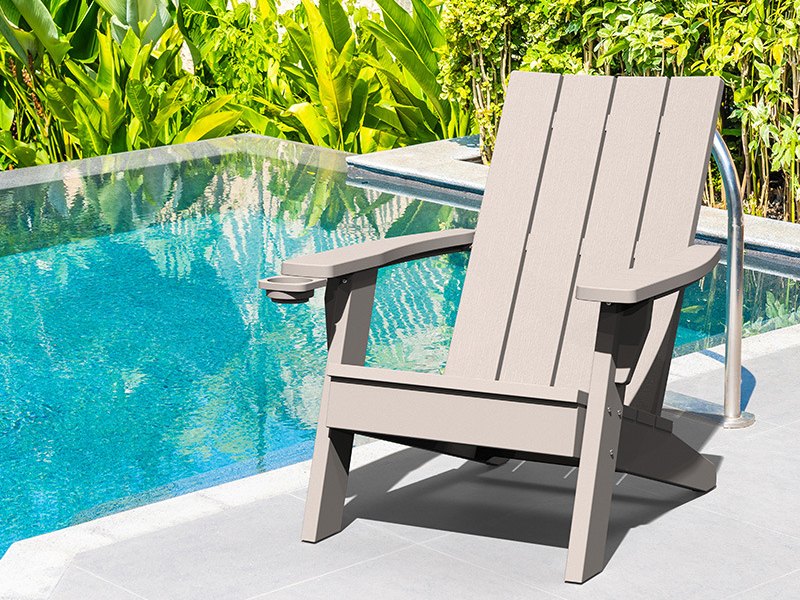
WPotrebbe essere necessario pensare un po' di più all'acquisto di mobili per esterni rispetto a quando si acquistano mobili per interni. Questo perché i mobili da esterno sono costantemente esposti a condizioni climatiche avverse e i materiali possono essere molto importanti. Se vuoi che i tuoi tavoli e le tue sedie durino più a lungo all'aperto, dovresti essere più attento ad analizzare e confrontare le materie prime utilizzate per realizzarli prima di decidere di acquistarli.

WQuando si parla di plastica, tutti non sono estranei, ma in realtà la plastica è una famiglia molto numerosa.
Plastiche a base biologica
Bio-based plastics are made from renewable biological resources. For example, sugar cane is processed to produce ethylene, which can then be used to make polyethylene. Starch can be processed into lactic acid, which can then be used to produce polylactic acid (PLA).
Plastica degradabile
Degradable plastics are plastics that are degraded by microorganisms into water, carbon dioxide (or methane) and biomass under specific conditions.

Ingegneria delle materie plastiche
Engineering plastics offer higher performance than standard materials, making them ideal for harsh engineering applications. In many applications, they have gradually replaced traditional engineering materials such as wood or metal because they not only equal or exceed traditional materials in weight/strength ratio and other properties, but are also easier to manufacture, especially in applications with complex designs.
Resine epossidiche
Epoxy resins have been around for over 50 years and are one of the most successful of the plastics family. Their physical state can change from a low-viscosity liquid to a high-melting solid, which means that a wide variety of materials with unique properties can be manufactured. At home, you'll find them transformed into soft drink bottles and a variety of packaging materials, and they're used as protective coatings for everything from beds, garden chairs, office and hospital furniture to supermarket carts and bicycles. They are also used in special industries, such as protecting the surfaces of ships, oil rigs and wind turbines from the effects of bad weather.
Polistirene espanso
Expanded polystyrene or EPS is a widely used commodity polymer. It is widely used as a shockproof packaging material for machinery and equipment, instruments, household appliances, handicrafts and other fragile and valuable products, as well as for fast food packaging.
Fluoropolimeri
Fluoropolymers are known for their outstanding non-stick properties, which are associated with their use as coatings on cookware and as stain repellents for fabrics and textiles. They have also contributed to significant advances in aerospace, electronics, automotive, industrial processes (chemical and power sectors, including renewable energy), construction, food and pharmaceutical, and medical applications. The best-known member of fluoropolymers is PTFE (polytetrafluoroethylene).
Poliolefine
Polyolefins are polymers of polyethylene and polypropylene thermoplastics. They are produced primarily from petroleum and natural gas through the polymerization process of ethylene and propylene, respectively. Their versatility makes them one of the most popular plastics today.
Polistirolo
Polystyrene is a synthetic polymer made from styrene monomer, which is a petroleum liquefaction product. It is a thermoplastic polymer that softens when heated and can be transformed into a variety of final products through semi-finished products such as films and sheets.
Poliuretano
Polyurethane is a flexible, pliable and durable man-made material. There are various types of polyurethanes that look and feel very different from each other. They are used in a very wide range of products. In fact, we are surrounded by products containing polyurethane in all aspects of our daily lives. While most people are not familiar with polyurethanes because they are often "hidden" behind covers or surfaces made of other materials, it is hard to imagine life without them.
Cloruro di polivinile
Polyvinyl chloride was one of the first plastics to be discovered and one of the most widely used. It comes from salt (57%) and oil or natural gas (43%). It is the third most widely produced synthetic plastic polymer in the world, after polyethylene and polypropylene.PVC comes in two basic forms: rigid (sometimes abbreviated as RPVC) and flexible.
Termoplastici
Thermoplastics are polymers that can be melted and recast almost indefinitely. They melt when heated and harden when cooled. However, when frozen, thermoplastics become glassy and break easily. This material can be repeatedly reheated, remolded and cooled. Therefore, thermoplastics are recyclable in production. Some of the most common types of thermoplastics are polypropylene, polyethylene, polyvinyl chloride, polystyrene, polyethylene phthalate, and polycarbonate.
Con così tanti ottimi materiali trasformati in una varietà di mobili per esterni, i mobili per esterni in plastica sono un prodotto molto ecologico che non solo è durevole e richiede una manutenzione estremamente ridotta, ma può essere completamente riciclato alla fine della sua vita utile.
A causa della superficie liscia, i mobili per esterni in plastica possono essere facilmente puliti con solo acqua e sapone e uno straccio, rendendolo la scelta perfetta per i pigri.
Vantaggi dei mobili da esterno in plasticaï¼
The beauty of plastic outdoor furniture is that they require little maintenance.
È resistente all'umidità, non si ammuffisce e resiste agli elementi senza la necessità di sigillanti o vernici.
È anche molto conveniente, disponibile in una varietà di colori e può sembrare qualsiasi altro materiale.
Un altro vantaggio è che i mobili in plastica sono leggeri e spesso impilabili
Riciclabile
Svantaggi dei mobili da esterno in plasticaï¼
- I mobili da esterno strutturati in plastica potrebbero non sembrare di fascia alta
- Può esplodere in condizioni meteorologiche estreme